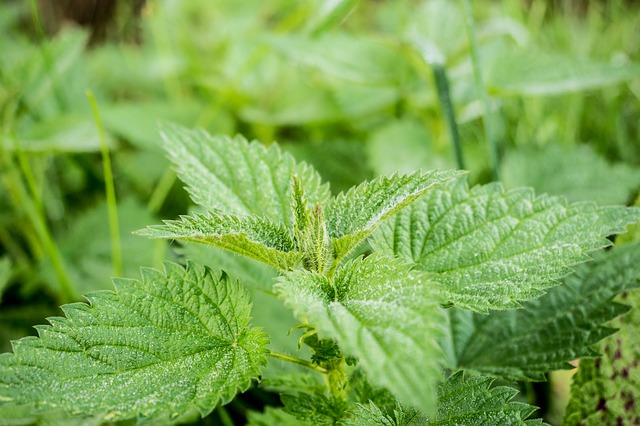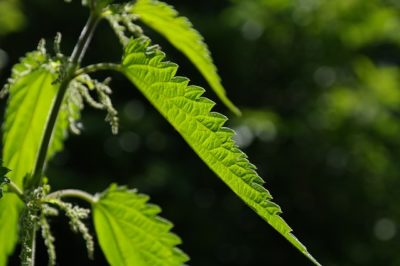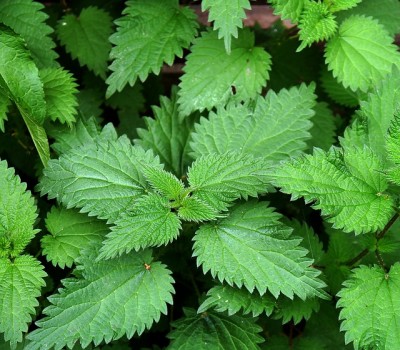From Russia across Europe to the United Kingdom, stinging nettles are enjoyed in soups, stews and as an ingredient in everything from pasta to pesto. The nettles also make an excellent tea, but regardless of the recipe you need to apply a bit of caution and common sense when harvesting and preparing stinging nettles.
Of course, stinging nettles also are found in yards and fields throughout the United States and North America.
It’s hard for many people in North America to understand the popularity of stinging nettles in Europe. There are a few good reasons why Europeans consider them a regular part of their diet:
- Stinging nettles can be harvested in early spring, long before other green, leafy vegetables show up.
- They grow like weeds and grow just about anywhere, making them easy to find, and they’re free.
- They are commonly found in grocery stores and markets in Europe, but rarely if ever in grocery stores in the US.
- They are a long-established part of European culinary traditions and culture.
Here’s the point: Don’t be put off by the name. They can be incorporated easily into many recipes if handled and prepared properly.
Once the leaves of a stinging nettle have been exposed to hot liquid for a couple of minutes or finely chopped in a food processor, the needles and stinging chemicals are neutralized and they’re safe to eat. They are often used as a substitute for spinach, and, in fact, have a taste similar to spinach with cucumber flavor notes. There are numerous vitamins in them, from vitamin A to vitamin C to vitamin K. (In fact, they have more vitamin A, fiber, iron, calcium and magnesium than broccoli – although broccoli does have more vitamin C). Nettles have a surprising 25 percent protein content, and they’re known to be a natural blood thinner and diuretic. They’re also high in iron and have a similar nutritional profile to other green, leafy vegetables like kale and spinach.
Learn How To Make Powerful Herbal Medicines, Right in Your Kitchen! [2]
So, what makes a stinging nettle sting? The leaves, leaf buds and parts of the stem on a stinging nettle are lined with small, hollow filaments that contain a variety of chemical compounds, including formic acid. When the filaments come in contact with the skin, they break off like tiny needles and cause a stinging, burning sensation. That’s why the standard recommendation of harvesting include gloves, long sleeves and pants. Scissors are usually used to trim the leaves and leaf buds from the plant, and they are typically collected in plastic bags.
Recognizing Stinging Nettles
Stinging nettles have a unique, heart-shaped leaf with serrations along the leaf edge. They are typically a deep green and are often harvested in the spring and early summer. Once they flower, they develop some hard deposits that some believe will irritate the urinary tract. If in doubt about a plant, you can always run your finger along a leaf from the tip to leaf stem. If it stings, you’ve found a stinging nettle. Hopefully you only have to do this once or twice as you familiarize yourself with the plant.
Cures for a Sting
It’s inevitable that you’ll get stung if you regularly collect stinging nettles. Common remedies include the external application of apple cider vinegar, a paste of baking soda and water, over-the-counter sprays like Bactine or Solarcaine, aloe vera, ice cubes and cold water.
Initial Prep for Stinging Nettles
Most recipes for stinging nettles recommend an initial preparation step that involves immersing the nettle leaves in lightly boiling water, broth or sautéed in butter or oil for at least 2 minutes up to 5 minutes. The leaves are then squeezed dry for addition to some recipes, or left in the broth for a soup or stew. Some people simply add the raw nettles to a food processor but I prefer blanching them for at least 2 minutes before any food-processor step.
Countless recipes for stinging nettles can be found on the Internet, and we’ll feature some of them here, but a basic rule of thumb is that any green, leafy vegetable or herb can be substituted with the leaves of the stinging nettle. Examples include replacement of basil with stinging nettles leaves in a pesto, or any recipe that calls for collard greens, kale, spinach, mustard greens and others. You can even make a green pasta with a processed paste of nettles leaves and flour. What’s important is to precede any usage of nettles with the initial preparation step in gently boiling water or hot oil.
Nettle Pesto
INGREDIENTS:
- 1 cup of blanched nettle leaves
- ½ cup of nuts (pine nuts or your choice or mixed nuts)
- ½ teaspoon of salt
- ½ teaspoon of pepper
- ¾ cup of grated parmesan cheese
- ½ cup of olive oil
DIRECTIONS:
Add all of the ingredients except the olive oil to a food processor and pulse until the nettles are a smooth paste. Drizzle the olive oil into the processor while it’s running. You can add more oil to the consistency you like. Use to top pasta or any other dish that calls for pesto.
Nettle Soup with Noodles
(Makes four one cup servings)
INGREDIENTS:
- 1 medium onion chopped
- 3 carrots sliced
- 2 tablespoons of olive oil
- 3 cups of fresh, raw nettles
- 4 cups of chicken broth
- 1 cup of rotini or other spoon-sized noodles
DIRECTIONS:
Sauté the onion and carrots in a saucepan in the olive oil for about three minutes or until the onions are translucent. In a separate sauce pan, bring water to a boil and cook the noodles. Deglaze the carrots and onions in the other pan with the chicken broth and bring to a gentle boil. Add the fresh nettle leaves and simmer for four minutes. Strain the noodles and add to the soup broth. Serve with crusty bread.
Nettle Greens with Bacon
(Serves 4)
INGREDIENTS:
- 6 slices of bacon
- 4 cups of water
- 6 cups of fresh nettle leaves
- Salt and pepper to taste
DIRECTIONS:
Fry the bacon until crisp and drain on paper towels. Reserve the bacon drippings in the frying pan. While frying the bacon, bring four cups of water to a boil and add the nettle leaves and cook at a gentle boil for four to six minutes. Drain the leaves and try to press out some of the moisture and toss in the warm bacon drippings. Serve on a platter and sprinkle crumbled bacon over the top.
If you’ve never tried stinging nettles before, this may be the year to give them a try.
Do you eat stinging nettles? What advice would you add? Share your tips in the section below:
Harness The Power Of Nature’s Most Remarkable Healer: Vinegar [5]


